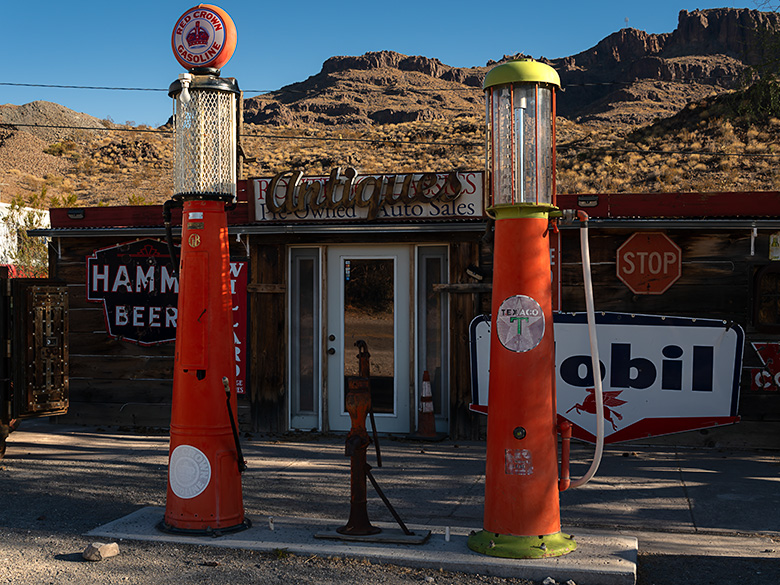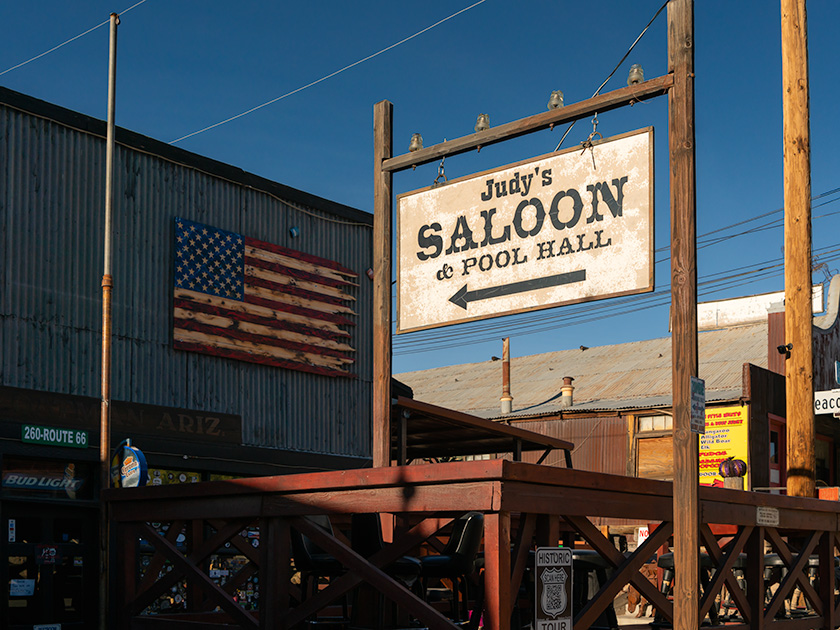
Let’s talk about a little thing called ROI, or return on investment. In layperson’s terms, it’s like this: if your piggy bank’s diet consists more of withdrawals than deposits, it’s time to put that cash-chewing pastime on a strict no-spend regimen. It’s a handy rule of thumb for deciding whether that avocado toast obsession is a splurge too far and for the bigwigs running the corporate circus. They don’t just steer the company ship; they’re the jugglers, tightrope walkers, and lion tamers tasked with keeping the ROI roaring so the shareholders don’t start looking for a tamer’s head to put in the lion’s mouth.
In the harsh and unforgiving world of mining towns like Oatman, hitting the ROI redline means ‘game over’ for the local economy. The investors pack up their checkbooks, the mines shutter faster than a camera at a ghost sighting, and the workers scatter like tumbleweeds in a dust storm. The town’s pulse slows, and those left behind are like the band on the Titanic—playing on bravely, knowing the finale is nigh.
The tale of Oatman follows a script as predictable as the instructions on a shampoo bottle—minus the rejuvenating wash. It’s a cycle as old as time: boom, bust, and echo. The brightest stars eventually fizzle out, and Oatman’s star, once a beacon of the Gold Rush, was no exception. And just like a one-two punch in a heavyweight bout, Oatman’s knockout came swiftly. First, the mines dried up, and then Route 66 got a face-lift that sidestepped the town altogether. Modern progress, they said, but for Oatman, it was more like a step into obscurity.
The new road followed the railroad’s less adventurous path, leaving Oatman off the beaten path and out of the family vacation route. From the Clampetts to the Griswolds, no one was clamoring to visit an old shanty town at that time—and the Department of Transportation—forgot. Oatman became the town overlooking Mohave Valley with a ‘Do Not Disturb’ sign hung on its door.
As the rest of the world hurtled forward into the mid-20th century, Oatman seemed to hit the pause button. The once frenetic streets, echoing with the din of prosperity, fell silent, leaving only the whispering desert winds to tell their tales. For the few who chose to stay, life became a study of survival and simplicity. Oatman’s dwindling population, a patchwork of tenacious old-timers and resourceful souls, found a way to eke out a living from the sparse offerings of a town that had given its all to the golden days of yore.

The rhythm of life here was no longer dictated by the pulsing promise of gold but by the sun’s arc across the sky. The remaining residents turned to the land, coaxing modest gardens from the arid soil, trading with neighbors, and gathering at Judy’s Saloon for some, reliving the glory days in stories told and retold like cherished family heirlooms. They adapted, repurposing old mining tools for mundane tasks and transforming abandoned structures into homes and makeshift businesses that catered to the occasional traveler, lost or adventurous enough to stray from the new Route 66.
In this era, Oatman’s heartbeat was a subtle one, felt rather than heard, in the stoic persistence of its people and the silent dignity of its weathered buildings. The community’s fabric was tightly knit, each person a thread bound to the other by shared history and collective tenacity. Life in Oatman wasn’t about thriving; it was about enduring, about preserving the essence of a town too proud to fade away.
The gasoline pumps featured in this week’s picture tell a story that’s as much about progress as it is about preservation. Red Crown gas, a blend marketed by Standard Oil (now Chevron), was the fuel of choice during the era these pumps would have served. Picture this: classic cars now wear the badge of ‘vintage’ had a dial for drivers to adjust the timing advance. A tank full of high-octane Red Crown meant more zip without the dreaded engine knock. Nowadays, that’s a job delegated to the computers in our cars.
But take a closer look at these gravity-feed pumps. Their pristine condition raises a question—have they stood the test of time, or are they beautifully restored pieces of history? It’s a bit of a mystery, much like the stories they hold. And for my eagle-eyed followers, yes, you’ve already noticed the white roof of the Diner Car peeking out on the left.
I hope you enjoyed this stroll down the quieter lanes of Oatman’s history, but don’t pack away your walking shoes just yet. Next week, we’re dusting off the fairy tale books for Oatman’s own Cinderella story—a happy ending sure to sparkle. If your curiosity about those Red Crown pumps is ticking like a Geiger counter in a gold mine, here’s your treasure map: links to my web page < Jim’s Site> and the Fine Art America page <FAA Link>. And hey, if you find yourself meandering through Oatman in the next few months, pop into that antique store and snoop around for the price tag on those pumps. Don’t forget to spill the beans in the comments below—I think they’d make a lovely gate for the end of my driveway.
Till our next adventure, keep your spirits high and your humor dry.
jw
Techniques: Mastering the Art of Symmetrical Composition
This week’s photo ventures into symmetrical composition, a method that, admittedly, I usually give a wide berth. Symmetry in photography is all about balance, akin to placing two candles at either end of a mantle for that classic, mirror-image elegance. But who says rules can’t be bent for a bit of creative flair?
Regarding the Red Crown gas pumps, symmetry was the starting point, not the destination. I aimed to capture both pumps in a single frame, spaced evenly from the frame’s edges to create a sense of balance. However, I opted for a slight twist rather than a straight-on, textbook symmetric shot. By shifting my position to the right, the pumps became natural frames for the ‘Antiques’ sign in the background, adding layers and depth to the image. It’s like setting those candles at different heights on the mantle; it catches the eye, creates tension, and makes you look twice.
The result? A photo that adheres to symmetry principles while stepping out of the conventional bounds, making for a more intriguing and dynamic composition. Sometimes, bending the rules just a little can lead to a more compelling story being told through the lens. What’s your take on it? Traditional symmetry or a dash of asymmetrical intrigue?

My grandfather had a gas pump like that on his farm. I remember how much fun it was to hand pump the gas up to the glass bucket on top and then watch it drain down into his tractor.
I’ll bet you wish you had it now. Because this style of pump wasn’t electric, I wonder if they’re considered ‘Green.’ – jw
My vote is restored.
Cinderella story…can’t wait!
I like you candle analogy…
I think they’re restored too. – jw